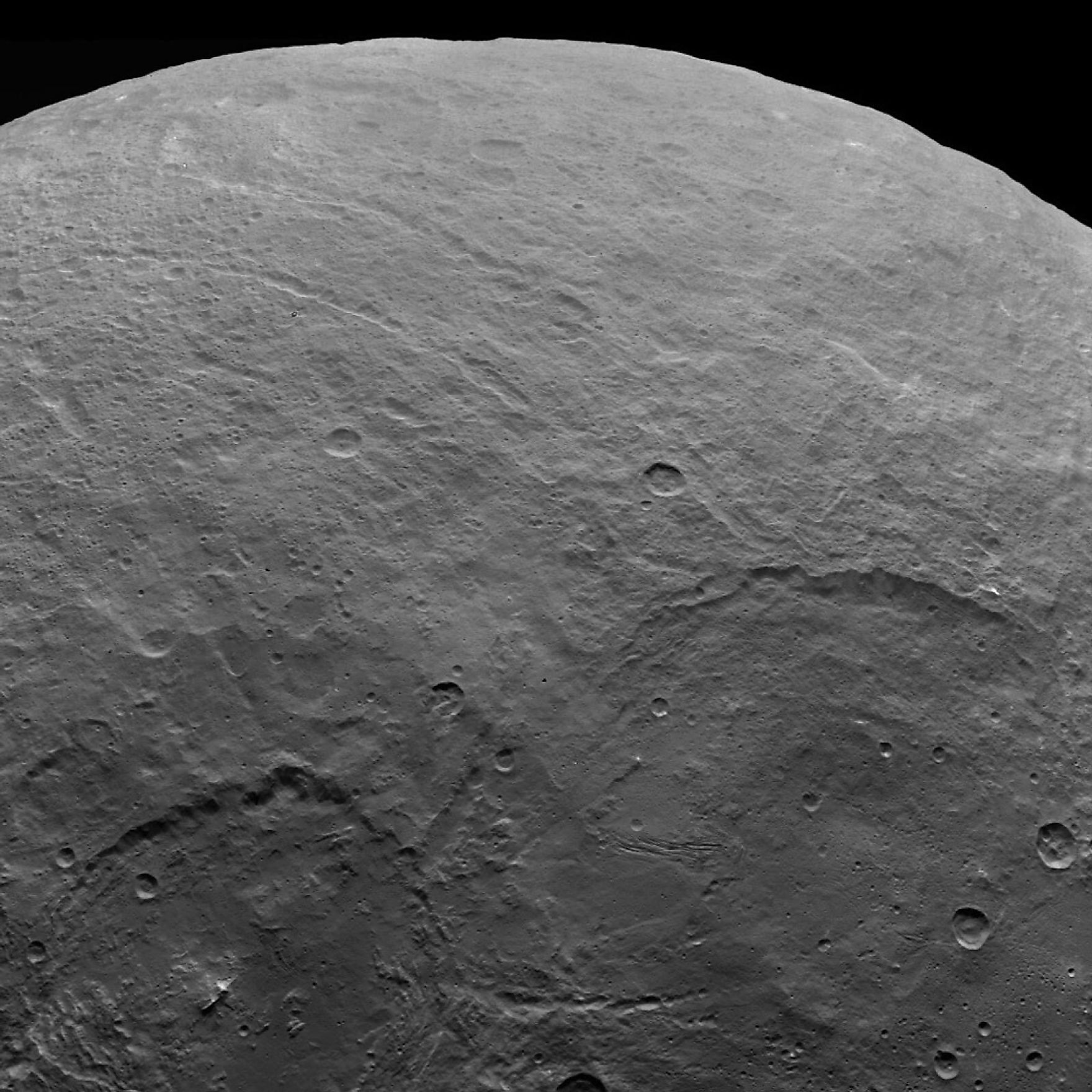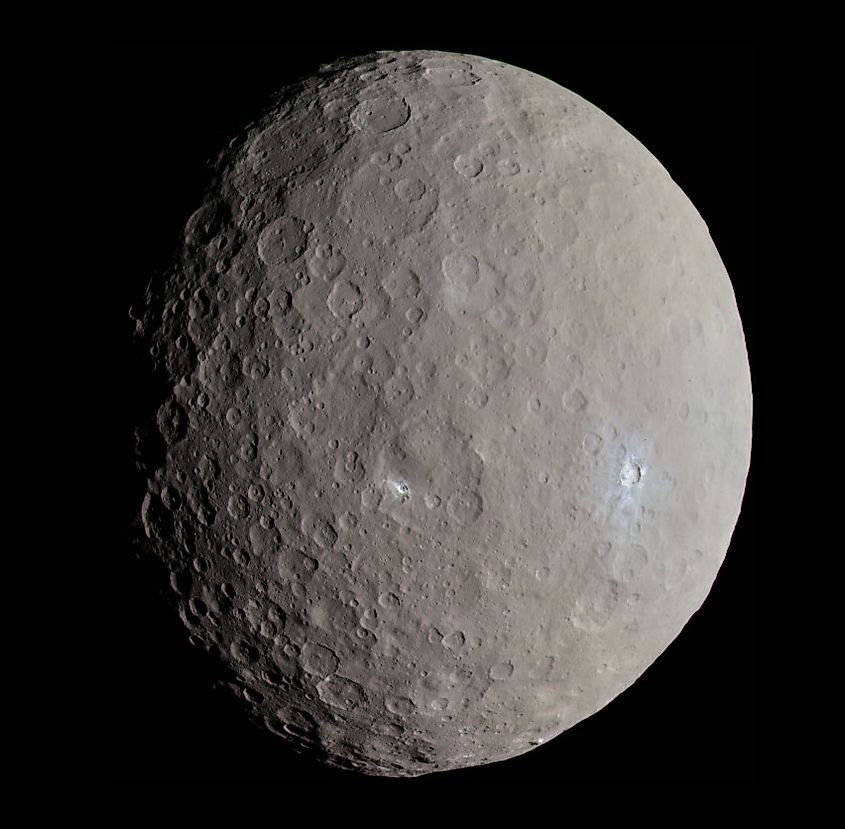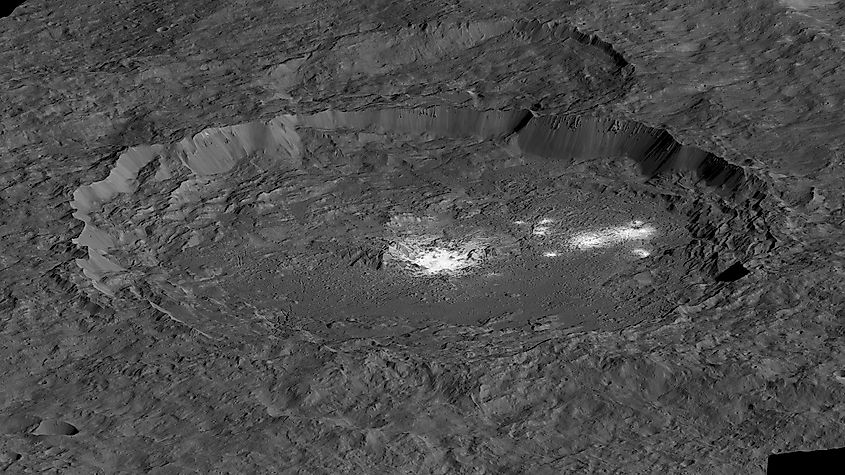
Ceres
Our solar system is home to potentially dozens of dwarf planets. Pluto is the most popular dwarf planet in our solar system, yet it was not the first to be discovered. In the early 1800s, astronomers discovered a faint point of light orbiting the sun between Mars and Jupiter. Like Pluto, this object was soon classified as a planet. The newly found “planet” was called Ceres, and astronomers soon realized that it was probably far too small to be a true planet.
Discovery

In the late 1500s, the astronomer Johannes Kepler observed a large gap located between the orbits of Mars and Jupiter. He concluded that a planet must exist in this region, as it was too large to simply contain nothing. This idea, that another planet existed, held sway for quite some time. Astronomers had just largely assumed that this large gap was simply the orbital path of an undiscovered planet. Then in 1801, astronomer Giuseppe Piazzi discovered a small object orbiting within this gap. It was named Ceres, and many astronomers believed they had found the missing planet. However, further observations revealed that Ceres was remarkably small. No matter what telescope they used, Ceres remained as nothing more than a small point of light, almost indistinguishable from the background stars. Over the next couple years, more tiny objects like Ceres were discovered in this gap. Although they were all designated as planets, the astronomer William Herschel had a different idea. In 1802, he concluded that these objects were not planets at all, but rather, should be placed in their own category of celestial objects. He called this new category “asteroids”, after the Greek word for “star-like”. However, even though Herschel had made this conclusion, astronomers still continued to classify these small objects as planets. As the years went on, more and more of these objects were found in between Mars and Jupiter. By the 1850s, astronomers began to conclude that these were not planets, but were in fact asteroids. The seemingly empty region in between Mars and Jupiter was in fact home to countless asteroids, and it became known as the Asteroid Belt. Ceres itself was reclassified as an asteroid, despite the fact that it was clearly the largest object in the Asteroid Belt. Ceres would remain under this designation until 2006, when, along with the downgrade of Pluto to dwarf planet, Ceres was upgraded from asteroid to dwarf planet. In March 2014, it became the first dwarf planet to be visited by a robotic spacecraft, when NASA’s Dawn spacecraft entered into orbit. It revealed a truly interesting and beautiful world.
Characteristics Of Ceres

Ceres orbits the sun at an average distance of 257 million miles (413 million kilometers), and it takes just over four Earth years to complete one orbit. With a diameter of only 584 miles (940 kilometres), Ceres is a lot smaller than Pluto. Despite its small size, it still shows evidence of geologic change. Amazingly, Dawn revealed clear evidence of volcanic activity on the surface, especially with the discovery of a cryovolcano called Ahuna Mons. Interestingly, there is evidence of volcanic activity that may have occurred in the last 240 million years, which is a relatively short period of time given that Ceres is 4.5 billion years old. Exactly how Ceres remained geologically active for so long remains a mystery. Unlike the volcanoes on Earth, volcanoes on Ceres do not release molten rock. Rather, they emit water, suggesting that long ago, Ceres may have contained a subsurface ocean of liquid water. Craters are by far the most dominant geologic feature on Ceres, yet they are not as common as you’d expect given Ceres’s location in the Asteroid Belt. A lack of impact craters is a strong indication that the surface has been reshaped by geologic forces. Perhaps the most intriguing feature of Ceres, however, was the discovery of bright spots scattered across its surface. These spots are significantly brighter than the surrounding surface, and their composition remained a mystery until the arrival of Dawn. In 2015, NASA announced that the bright spots were primarily composed of salt.











